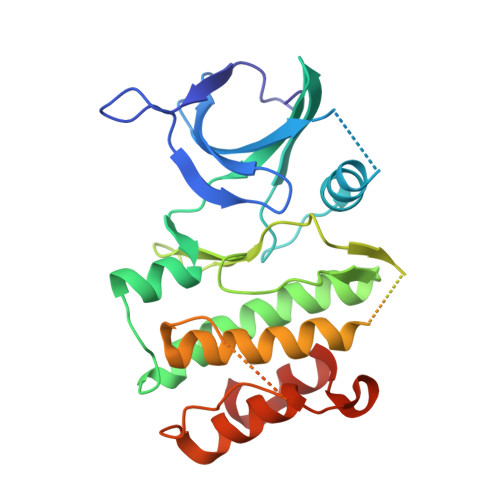Rational Design and Optimization of a Novel Class of Macrocyclic Apoptosis Signal-Regulating Kinase 1 Inhibitors.
Himmelbauer, M.K., Xin, Z., Jones, J.H., Enyedy, I., King, K., Marcotte, D.J., Murugan, P., Santoro, J.C., Hesson, T., Spilker, K., Johnson, J.L., Luzzio, M.J., Gilfillan, R., de Turiso, F.G.(2019) J Med Chem 62: 10740-10756
- PubMed: 31710475
- DOI: https://doi.org/10.1021/acs.jmedchem.9b01206
- Primary Citation of Related Structures:
6OYT, 6OYW - PubMed Abstract:
Structural analysis of a known apoptosis signal-regulating kinase 1 (ASK1) inhibitor bound to its kinase domain led to the design and synthesis of the novel macrocyclic inhibitor 8 (cell IC 50 = 1.2 μM). The profile of this compound was optimized for CNS penetration following two independent strategies: a rational design approach leading to 19 and a parallel synthesis approach leading to 26 . Both analogs are potent ASK1 inhibitors in biochemical and cellular assays ( 19 , cell IC 50 = 95 nM; 26 , cell IC 50 = 123 nM) and have moderate to low efflux ratio (ER) in an MDR1-MDCK assay ( 19 , ER = 5.2; 26 , ER = 1.5). In vivo PK studies revealed that inhibitor 19 had moderate CNS penetration ( K puu = 0.17) and analog 26 had high CNS penetration ( K puu = 1.0).
















